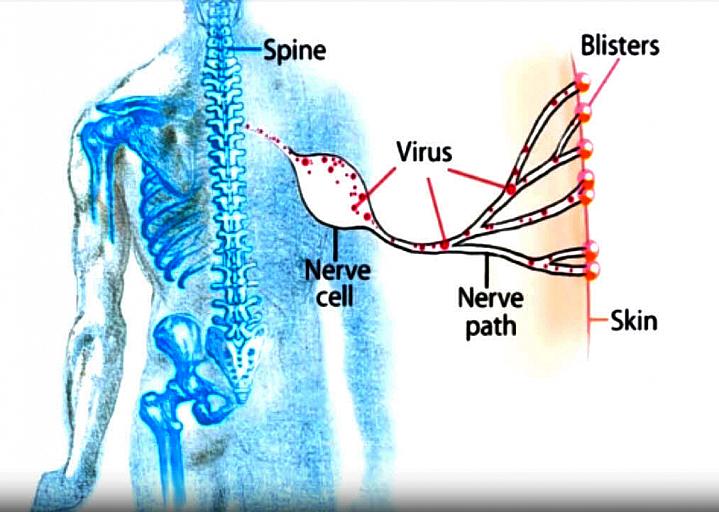Health Capsule
Preventing Shingles
 The chickenpox virus hides in nerve cells in your spine. If reactivated, the virus can travel to your skin and cause burning, itchy blisters called shingles. www.nia.nih.gov/health/shingles
The chickenpox virus hides in nerve cells in your spine. If reactivated, the virus can travel to your skin and cause burning, itchy blisters called shingles. www.nia.nih.gov/health/shinglesDid you ever have chickenpox? If so, you’re at risk for getting a disease called shingles. About 1 out of every 3 people will get shingles at some point in their lives.
After you’ve had chickenpox, the virus becomes inactive and hides in your body. Shingles is caused by the virus becoming active again, but its symptoms can be much more severe. Burning, itchy rashes and blisters may appear on one side of your body or face. You might also feel fatigue, fever, headache, or an upset stomach.
The rashes and blisters can take 3 to 5 weeks to heal. However, the pain could last much longer. It’s possible to get shingles more than once.
As you get older, your risk for getting shingles grows. Shingles most commonly occurs in adults over 50, but it can appear at any age.
There are now two shingles vaccines approved by the U.S. Food and Drug Administration (FDA) for people over 50. They can help prevent shingles or lower the extent of the effects it may cause.
NIH Office of Communications and Public Liaison
Building 31, Room 5B52
Bethesda, MD 20892-2094
nihnewsinhealth@od.nih.gov
Tel: 301-451-8224
Editor: Harrison Wein, Ph.D.
Managing Editor: Tianna Hicklin, Ph.D.
Illustrator: Alan Defibaugh
Attention Editors: Reprint our articles and illustrations in your own publication. Our material is not copyrighted. Please acknowledge NIH News in Health as the source and send us a copy.
For more consumer health news and information, visit health.nih.gov.
For wellness toolkits, visit www.nih.gov/wellnesstoolkits.



